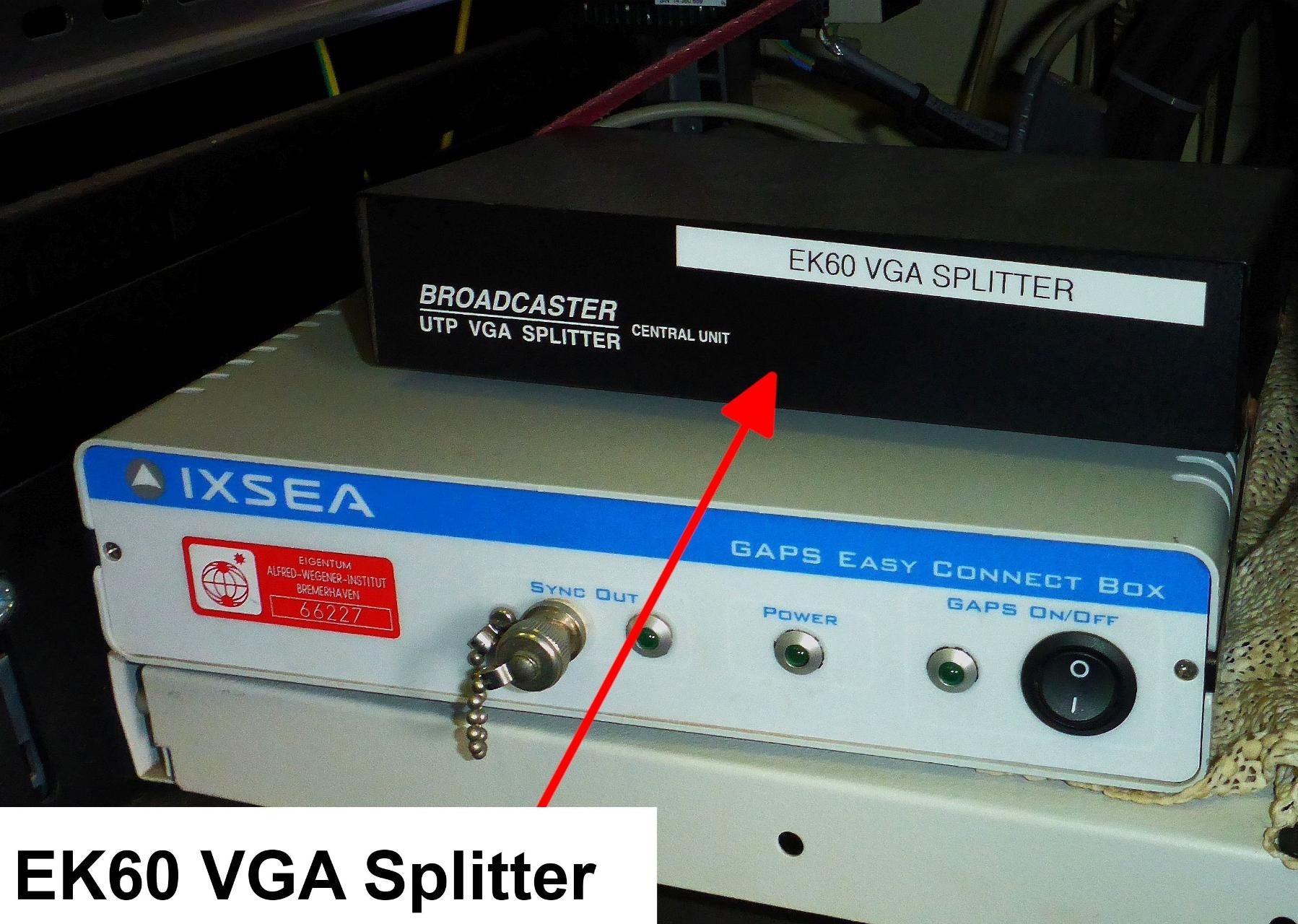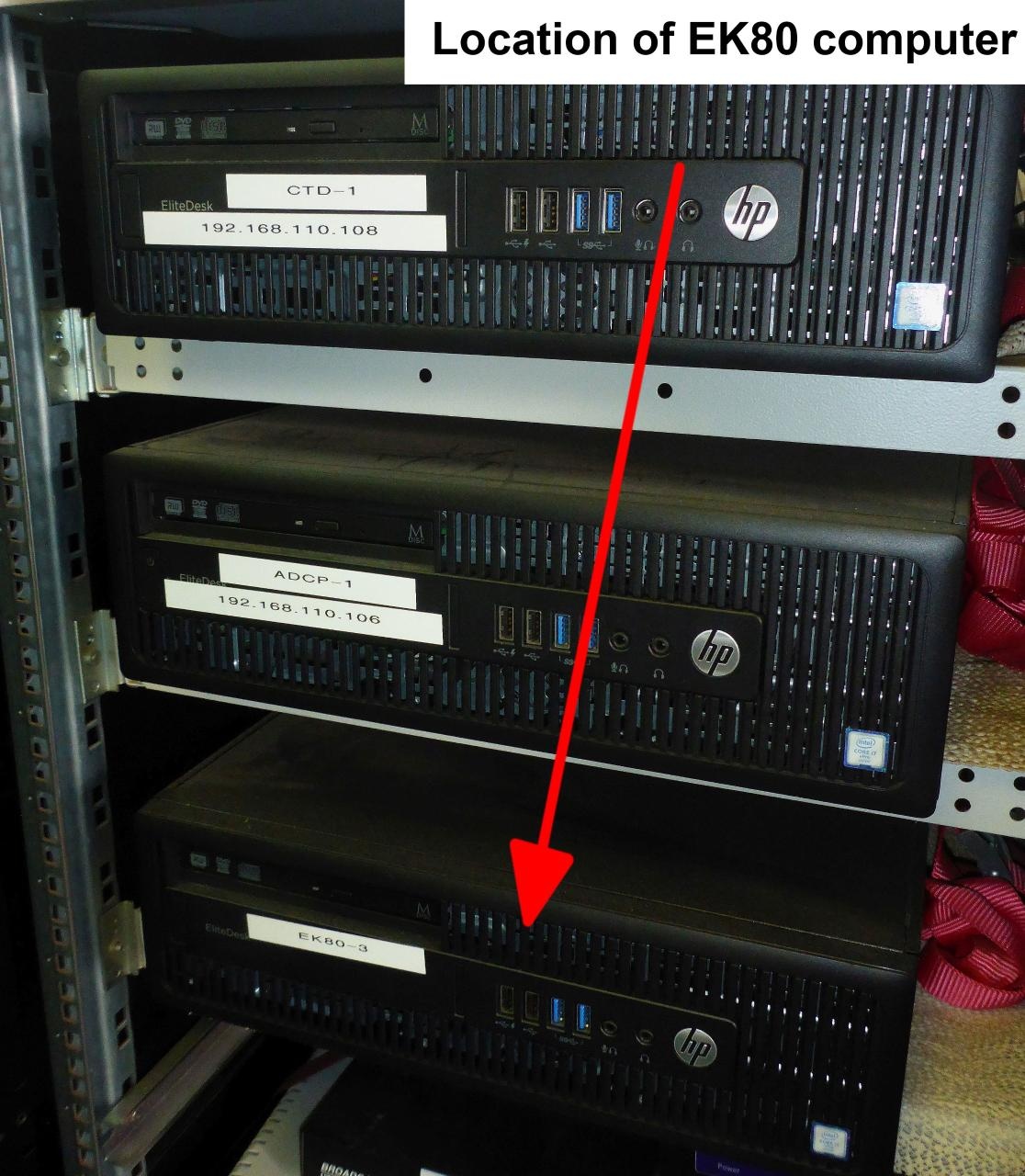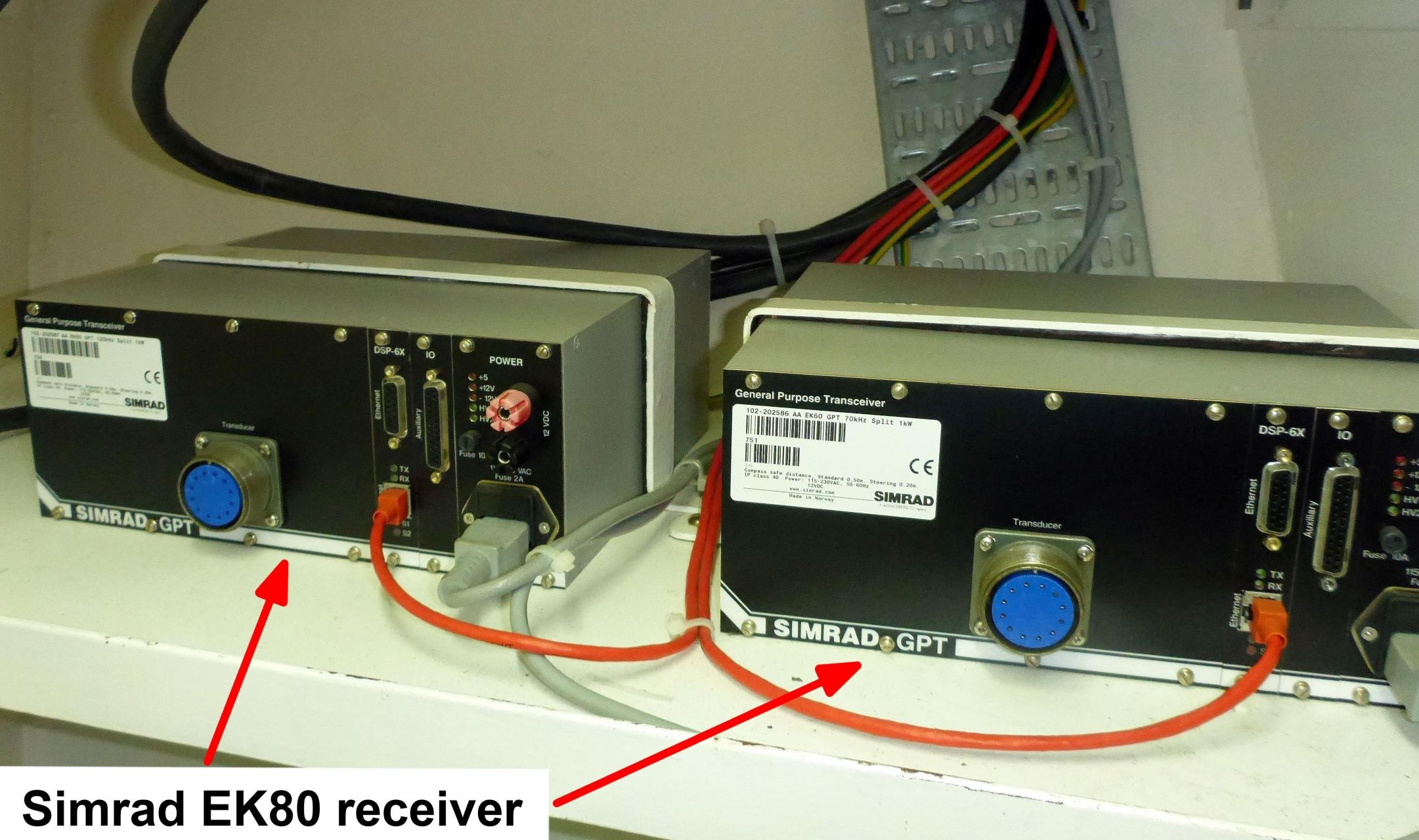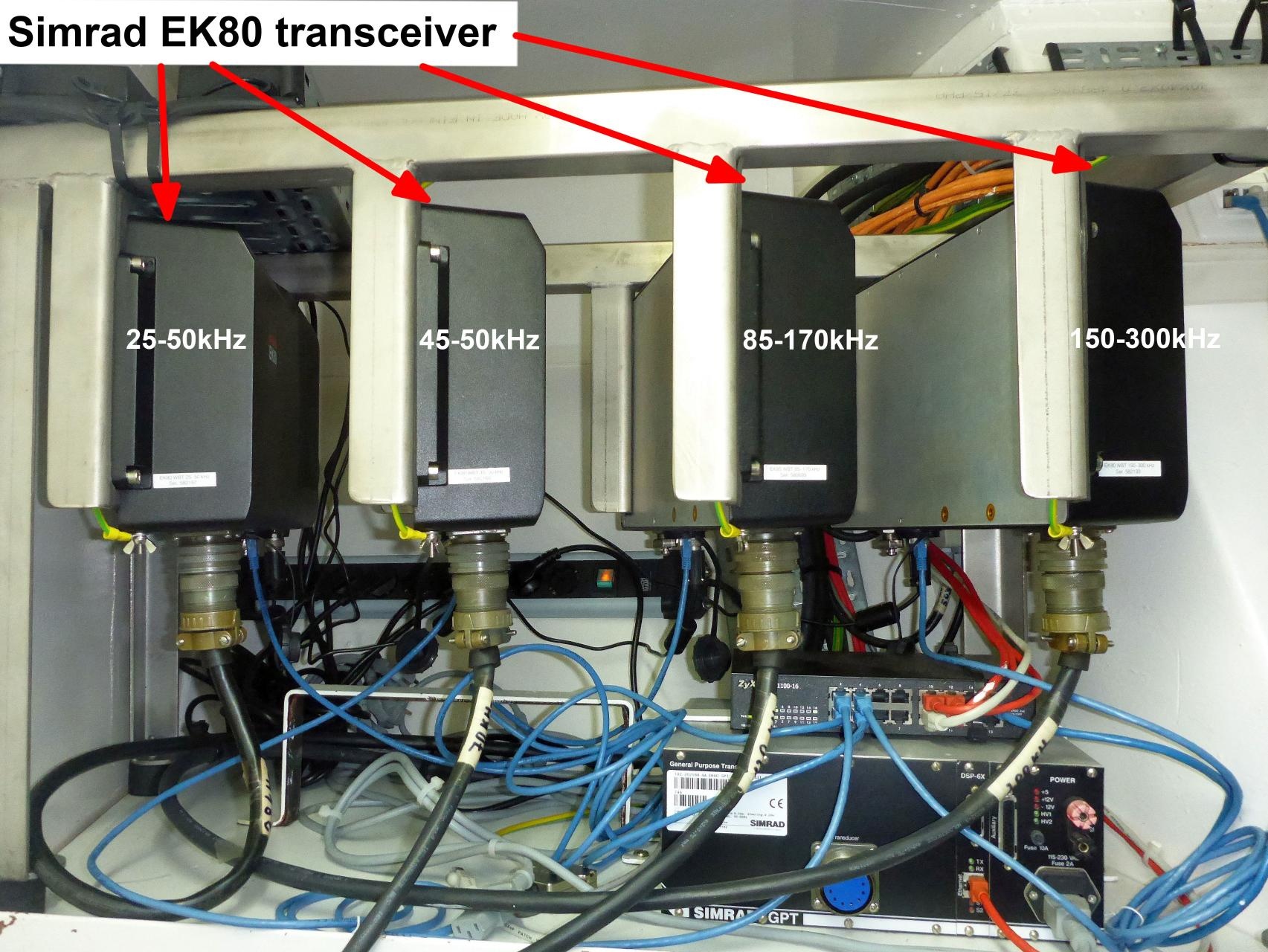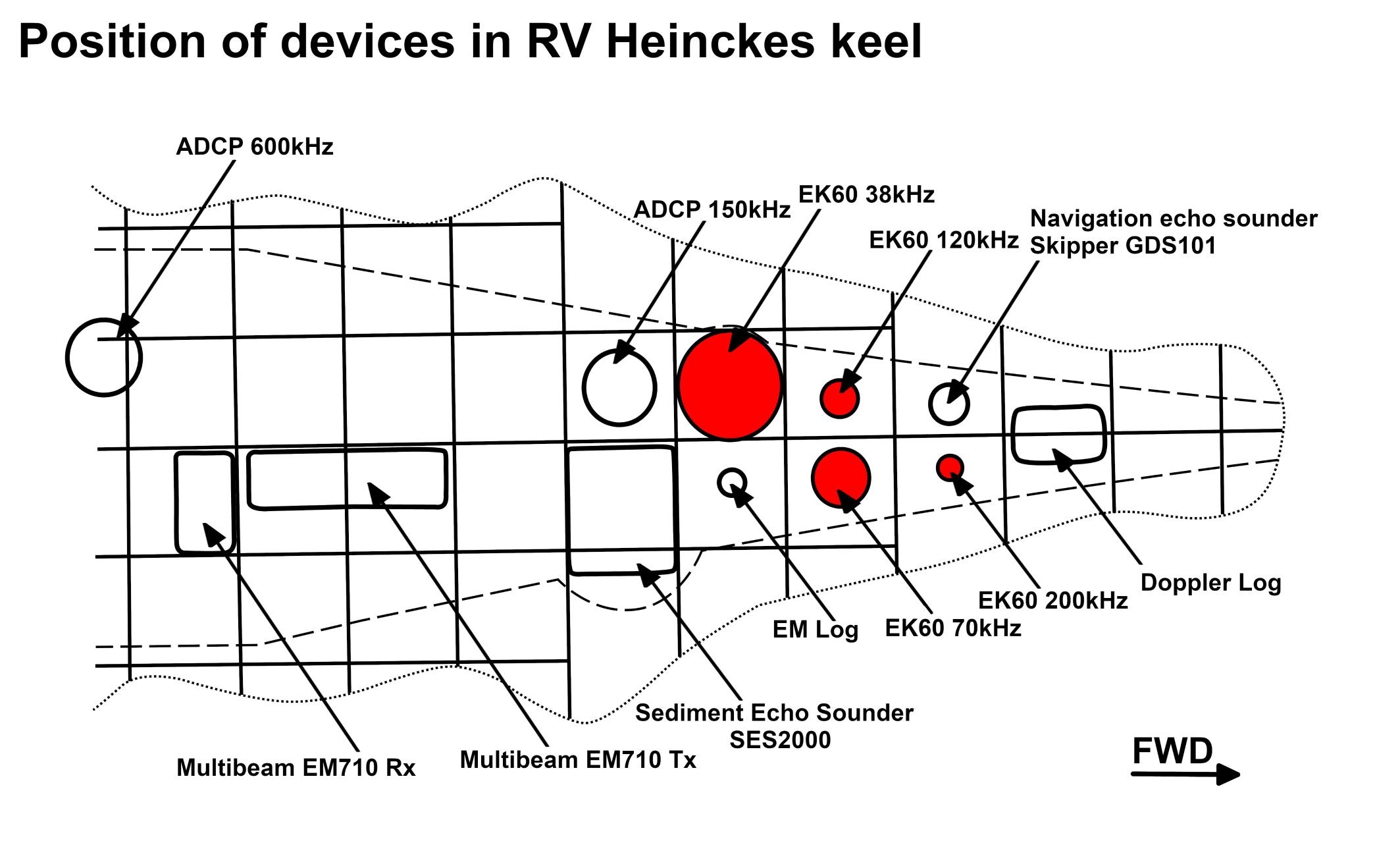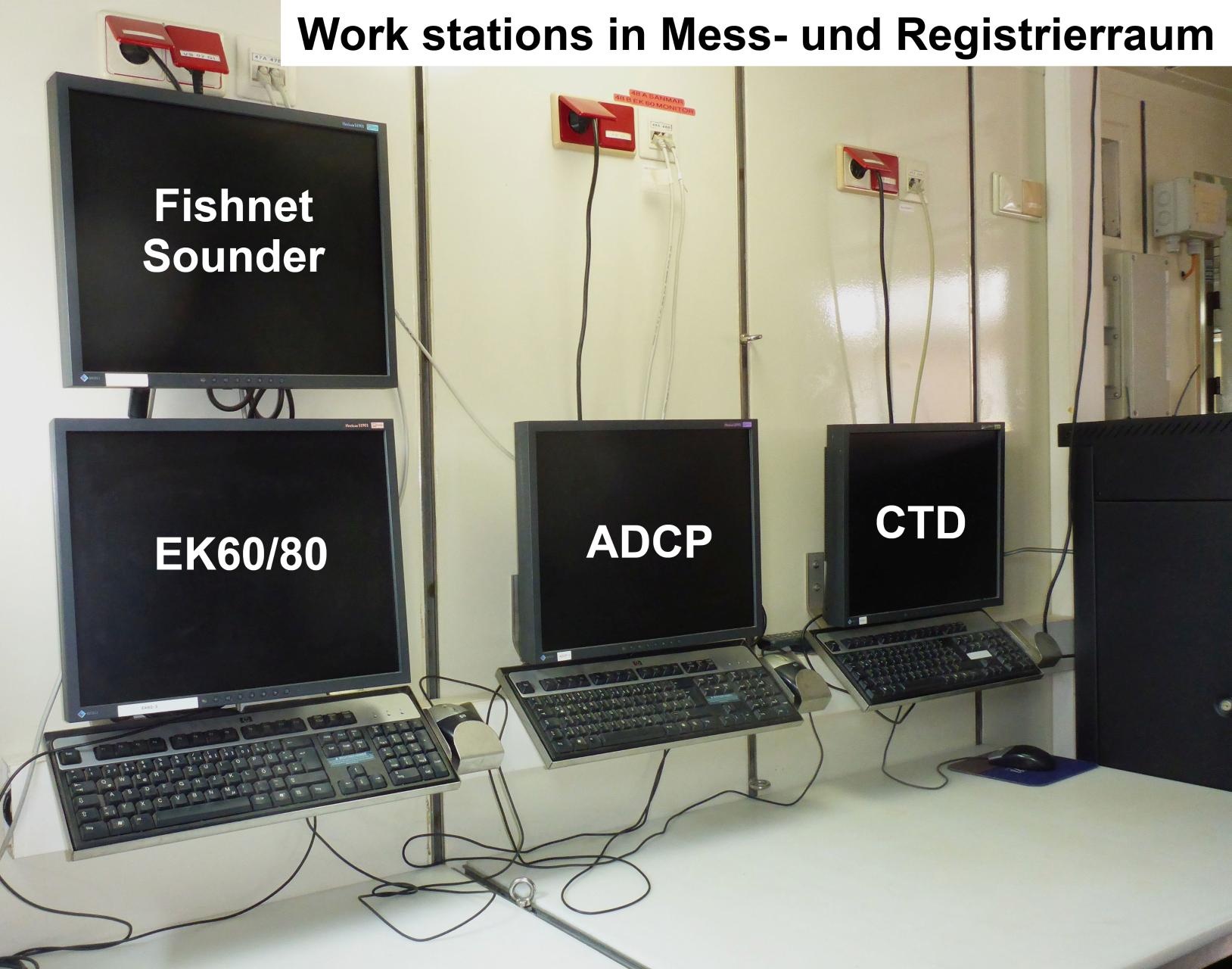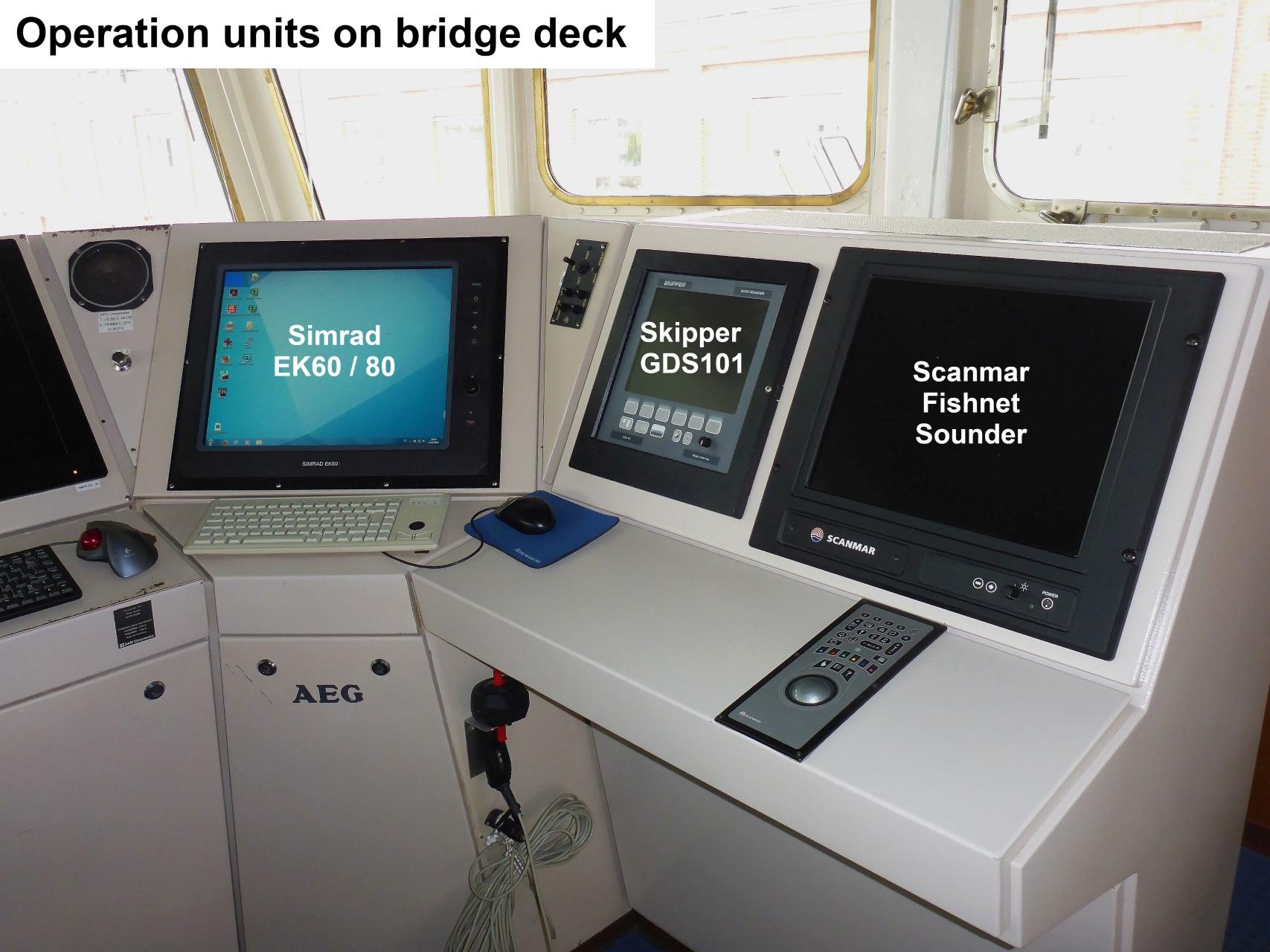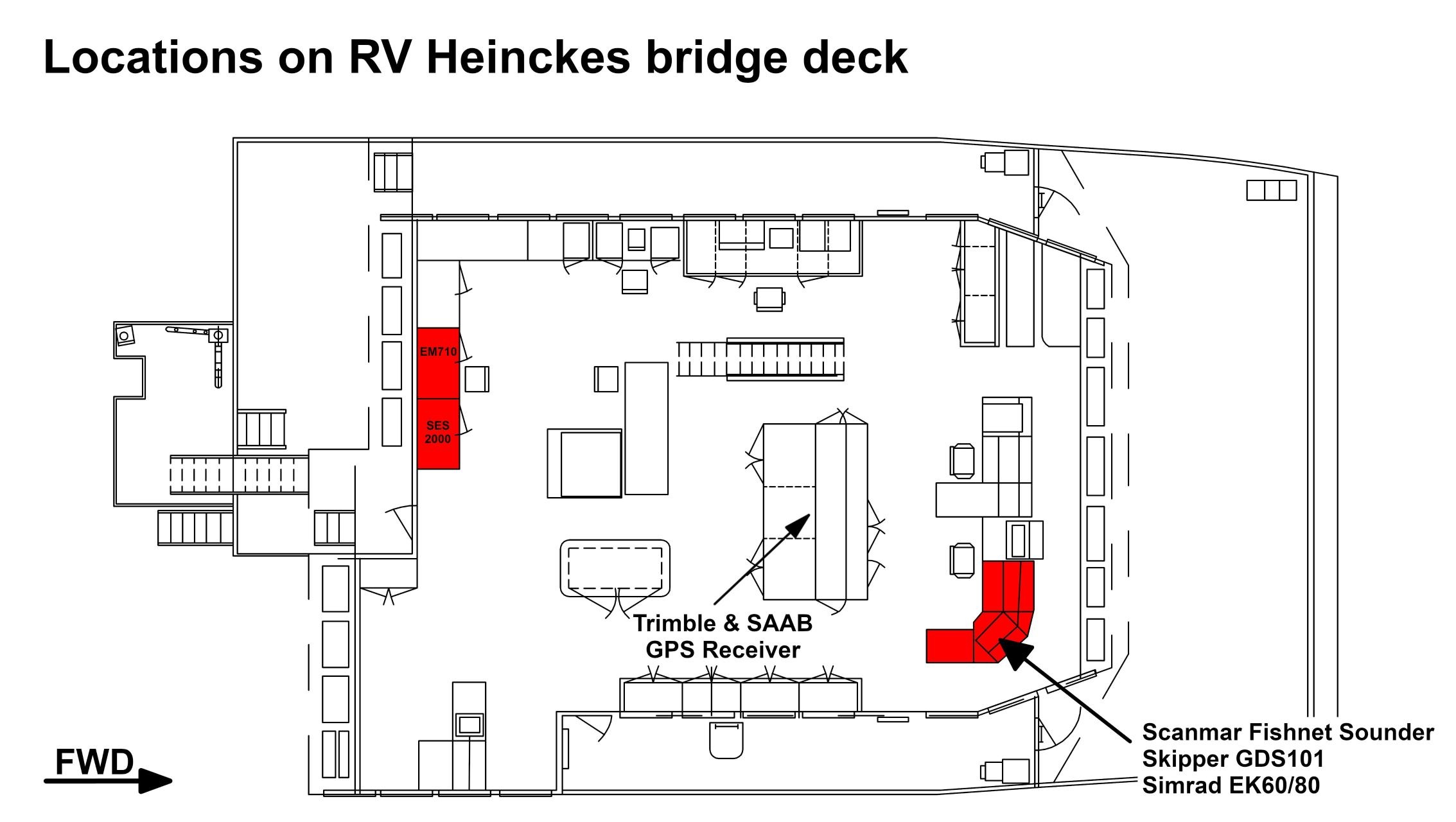Attention:
Please note that operations of the Fishing Echo Sounder Simrad EK 60 / EK 80 requires experienced scientific staff on board and can be only operated on request. The system is not operated by the ship's crew. Request operations with the Fishing Echo Sounder Simrad EK 60 / EK 80 to AWI-Logistics in sufficient time prior to the cruise and clarify the data transfer after the cruise.
Data quality of Fishing Echo Sounder Simrad EK 60 / EK 80 is decreased by operating other Echo Sounders. Switch off these Echo Sounders for high data quality.
Summary
The sounder operates several frequencies simultaneously thus allowing to detect fish or even plancton in different depths.
| Manufacturer | Kongsberg |
|---|---|
| Model | Simrad EK 60 / EK 80 |
| Serial No. | n/a |
| Type | echo sounder |
| SENSOR-Link | ↪ |
Transducer Frequency
Contacts
| Name | Institution | Role |
|---|---|---|
| Sören Krägefsky | Alfred Wegener Institute, Helmholtz Centre for Polar and Marine Research | Data Scientist |
Components
The four split beam transducer ES-38B, ES-70C, ES-120C and ES-200C are installed in the keel of RV Heincke. The transceiver and receiver are situated in the Lotgeraeteraum. Three PCs are available for handling of the EK60/80 on the bridge, in the Messraum and in the dry laboratory. Additionally a display is located in the wet laboratory.
The PCs are equipped with the aquisiton and processing software ER60. For further processing the software "echoview" may be used. A dongle is required for usage of the software. The dongle is NOT permanently stored on the ship. Please contact the responsible person for usage of the dongle in advance of the cruise.
Position
| Info | The transducer of the Fishing Echo Sounder system are situated in the keel of RV Heincke. Transceiver and receiver are located in the so called Lotgeraeteraum and the computers are stored in the Mess- and Registrierraum. |
Data logging, storage and archiving
Logged parameters
| Parameter | Sensor Output Type | Unit |
|---|---|---|
| depth at different frequencies | depth | m |
Central geographical ship's position and time standard
Rawdata storage on board
root directory |
\\H:\scientists\data\fishsounder| |
|---|---|
directory name |
CruiseNo e.g. HE507 |
file name |
CruiseNo-Dyyyymmdd-Thhmmss.raw |
Data volume (MB per day) ca |
3500 |
Number of files per day ca |
100 |
DShip
Device name |
Simrad EK_80 |
|---|---|
Parameters |
Depth Fathoms (120 kHz) [F]; Depth Fathoms (200 kHz) [F]; Depth Fathoms (38 kHz) [F]; Depth Fathoms (70 kHz) [F]; Depth Feet (120 kHz) [feet ]; Depth Feet (200 kHz) [feet]; Depth Feet (38 kHz) [feet]; Depth Feet (70 kHz) [feet]; Depth Meters (120 kHz) [m]; Depth Meters (200 kHz) [m]; Depth Meters (38 kHz) [m]; Depth Meters (70 kHz) [m] |
